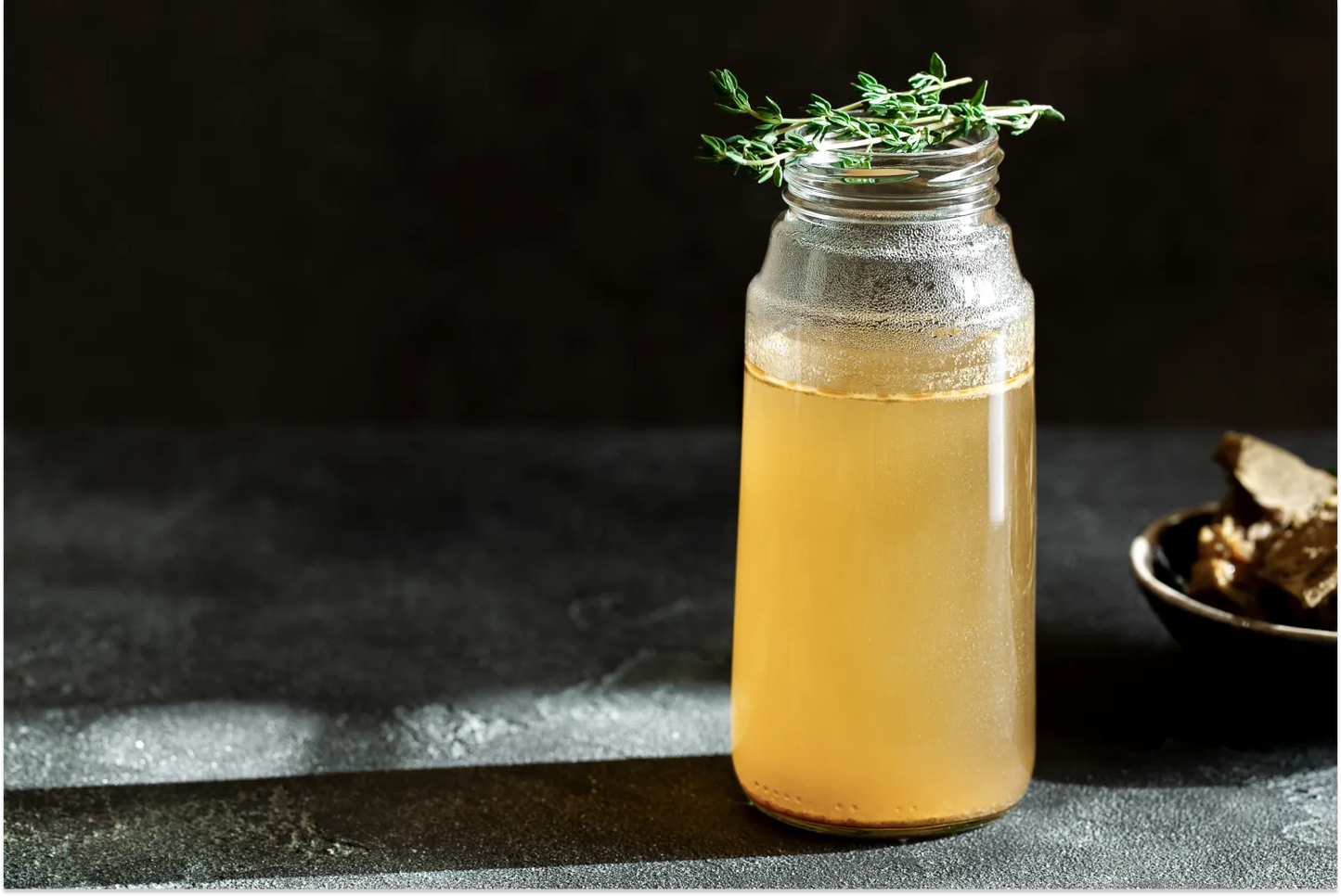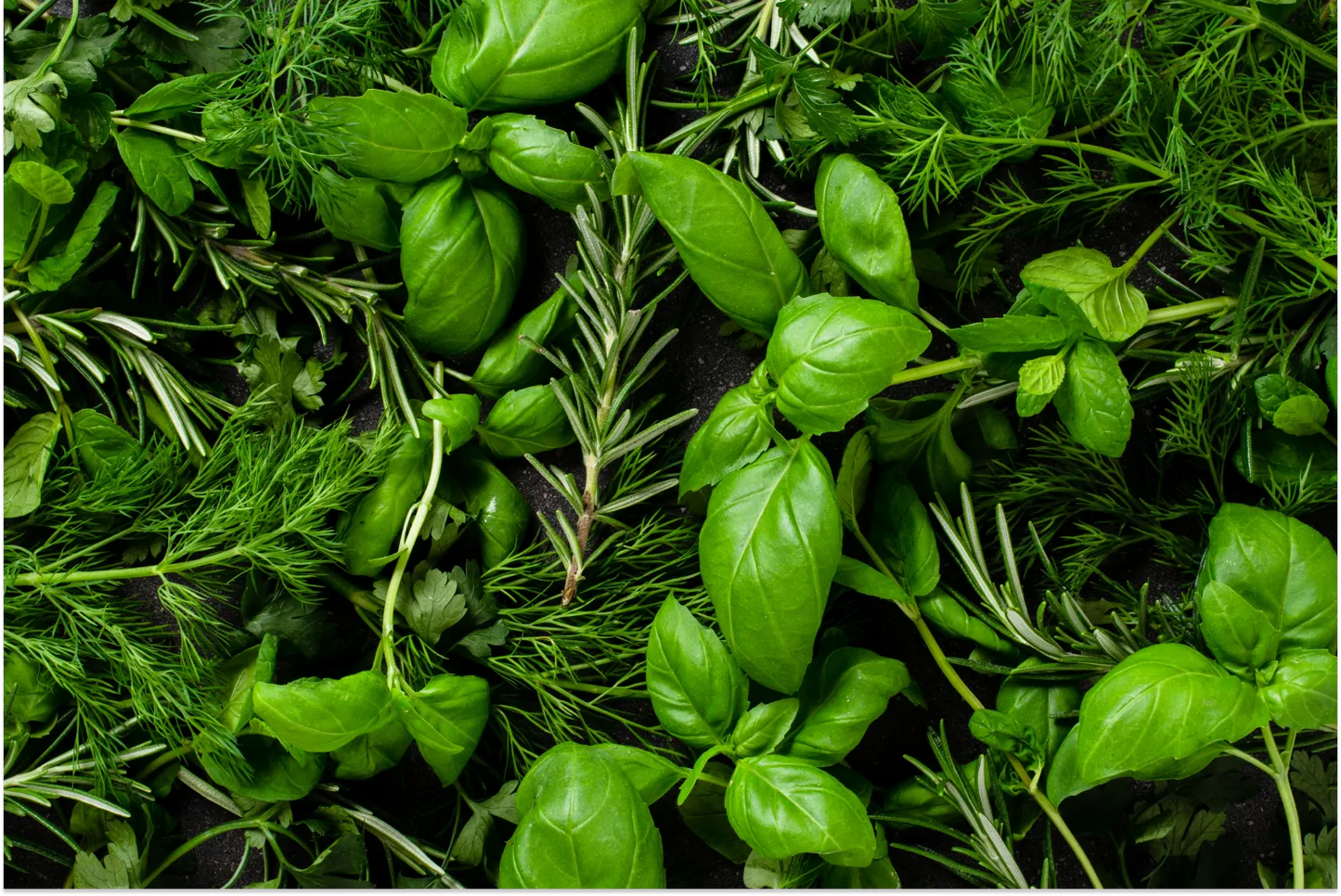
Can You Drink Bone Broth Cold? Here's the Best Time To Drink It
Bone broth, nature's gentle embrace for your gut, has made waves in the wellness community — and for good reasons! Packed with nature’s wonders, many hail it as the liquid gold for optimal wellness.
But did you know that the timing and temperature at which you consume it can make a difference? Let’s dive deeper into the enriching world of bone broth and answer a burning question: Can you drink bone broth cold? And when's the prime time to sip on this nourishing concoction?
What Is Bone Broth?
For the uninitiated, bone broth isn’t your average stock. It's a labor of love, brewed over hours, sometimes days, ensuring all the nutritious goodness from bones and connective tissues seep into the liquid. This elixir boasts a rich profile of essential minerals, amino acids, and collagen — all vital components for supporting our body's natural processes.
What Are the Benefits of Drinking Bone Broth?
Bone broth isn’t just a trendy drink; it’s a tradition that traces back to our ancestors. They recognized its potential to nourish our bodies from within.
- Digestive support: The collagen in bone broth can encourage a robust gut lining, setting the stage for a harmonious digestive environment.
- Joint comfort: Rich in glucosamine and chondroitin, bone broth can support the maintenance of our joints.
- Skin radiance: Collagen aids in supporting our skin's elasticity, promoting a youthful and radiant glow.
- Immune system backup: A warm cup of bone broth can provide essential nutrients, supporting our body's natural defenses.
Can You Drink Bone Broth Cold?
Yes, you can! In fact, during warmer months, a chilled bone broth might be just what you’re craving.
Some people even use it as a base for smoothies, adding a nutritional punch to their morning blend. While hot bone broth has its own comforting charm, cold bone broth retains all its nutritive properties, offering a refreshing take on a beloved remedy.
What Are the Benefits of Hot Bone Broth?
There's something incredibly comforting about sipping on a warm mug of bone broth. Here’s why hot bone broth is typically more popular:
- Soothing effect: The warm temperature can soothe the throat and offer comfort, especially during colder days.
- Enhanced flavor profile: Heating often releases and intensifies the flavors, making it a savory treat.
- Easier digestion: For some, warm liquids are gentler on the stomach and support smoother digestion.
When Is the Best Time To Drink Bone Broth?
Anytime is the right time for bone broth! But let’s explore some optimal times that might make your experience even more enriching.
In the Morning
Starting your day with bone broth can be a game-changer. Morning is when our bodies are ready to absorb and utilize nutrients most efficiently. Think of it as a morning tonic, setting a favorable foundation for your day. Instead of your regular coffee, a cup of bone broth can invigorate your senses and help you start your morning with protein instead of jitters.
In the Evening
After a long day, what better way to wind down than with a calming cup of bone broth? In the evening, it can be the perfect companion, supporting feelings of relaxation and preparing your body for a restful night. Its amino acid content, like glycine, supports a serene mood, making it a delightful pre-bed ritual.
How Can You Incorporate Bone Broth Into Your Daily Meals?
Bone broth isn’t just a health fad — it's a culinary tradition, rich in nutrients and versatile in its uses. Bone broth can be seamlessly integrated into your daily diet, whether you drink it straight up, use it as a base for soups, or even in your favorite dishes to amp up their nutritional value.
Below are a few tantalizing recipes that not only capture the rich essence of bone broth but also elevate your everyday meal experience. So, let's dive in!
French Onion Bone Broth Soup
Delight in a rich fusion of beef bone broth coupled with the enticing sweetness of roasted onions.
Ingredients:
- 4 cups Dr. Kellyann's Beef Bone Broth or 4 packs Dr. Kellyann's French Onion Bone Broth (ready-made)
- 1 petite garlic clove, crushed
- Approximately 1 cup of caramelized sweet onions
- 1/4 teaspoon herbs de Provence
- 1 peppercorn
- Celtic or pink Himalayan Salt for seasoning
Directions:
- Begin by pouring the beef bone broth into a medium-sized saucepan and set it over a moderate flame.
- Once you notice small bubbles around the edge of the broth, introduce the crushed garlic, caramelized onions, herbs de Provence, and peppercorn.
- Allow the flavors to meld by reducing the flame to low, ensuring the broth only emits a gentle simmer. Maintain this for five to 10 minutes.
- Using a slotted spoon, fish out and discard the garlic and peppercorn.
- Finalize the seasoning by stirring in the desired amount of Celtic or pink Himalayan salt.
- Serve warm and enjoy.
Healthy Cauliflower Soup Recipe
Those seeking a delicate flavor will adore this creamy cauliflower concoction, perfect for any meal setting.
Ingredients:
- 3 cups cauliflower buds, steamed
- 2 cups Dr. Kellyann's Rosemary Thyme Bone Broth
- 1 cup ground almonds
- 1-2 garlic cloves
- 1 mid-sized shallot, roughly diced
- ½ an English cucumber, deseeded, peeled, and chunked, saving 2 tablespoons for garnishing
- 2-3 teaspoons of sherry vinegar
- ¼ cup of first-press olive oil and an extra 2 tablespoons for a finishing touch
- ½ teaspoon of Celtic or Pink Himalayan salt
- 1 teaspoon of rosemary
- A pinch of white pepper
- ¼ cup almond slivers, toasted for garnishing
Directions:
- In a large blender, combine steamed cauliflower buds, rosemary thyme bone broth, ground almonds, garlic cloves, diced shallot, chunked cucumber, and sherry vinegar.
- Blitz the ingredients until a creamy and smooth texture forms.
- While blending, pour in the first-press olive oil gradually to integrate it into the mixture.
- Season your soup with rosemary, white pepper, and Celtic or Pink Himalayan salt, adjusting to taste.
- Decant the soup into bowls either chilled for a few hours or at ambient temperature.
- Enhance the presentation by drizzling olive oil, sprinkling cucumber bits, and scattering toasted almond slivers on top.
Mighty Greens Broth
A broth brimming with an array of greens, promising a gustatory explosion accompanied by a nutrient bonanza.
Ingredients:
- 2 quarts (8 cups) Dr. Kellyann’s Organic Chicken Bone Broth
- 2 leeks (white segment), finely sliced
- 3 celery shafts, sliced
- 2 garlic cloves, minced
- 1 teaspoon of either dried tarragon or thyme or their fresh equivalents
- A minimum of 6 cups of greens, snipped into half-inch strips
- 1 teaspoon Celtic or pink Himalayan salt
- ½ teaspoon ground black pepper
- Cold-pressed olive oil for finishing
Directions:
- Start by pouring the chicken bone broth into a large stockpot and placing it over medium heat.
- Once the broth warms up, integrate finely sliced leeks, sliced celery, minced garlic, and your choice of herb (tarragon or thyme).
- Allow the leeks to become tender by simmering the mix for about 10 minutes, ensuring the herbs release their flavors into the broth.
- Introduce the greens next, allowing them to cook until tender but still vibrant, roughly five to 10 minutes.
- Season with Celtic or pink Himalayan salt and ground black pepper. Give it a taste and adjust if necessary.
- When ready to serve, pour into bowls and embellish with a light drizzle of cold-pressed olive oil.
Hearty Beef Vegetable Soup
Rekindle memories of comforting home-cooked meals with this robust beef veggie soup, guaranteeing a heartwarming experience.
Ingredients:
- 1 tablespoon olive or avocado oil
- 1½ lbs chuck or beef stew meat, cut into ¾-inch cubes
- 2 teaspoons Celtic or pink Himalayan salt, divided
- 1 medium onion, diced
- 2 medium potatoes, peeled and diced into ½-inch pieces
- 3 medium carrots, cut into coins or half-moons
- 2 ribs celery, diced
- 1 medium red bell pepper, diced
- 2-3 cloves garlic, minced
- 14-oz can diced tomatoes
- 4 cups Dr. Kellyann's Beef Bone Broth
- 1 cup dry red wine (or another cup of bone broth)
- 2 tablespoons Worcestershire sauce
- 1 bay leaf
- 1 teaspoon dried thyme
- 1 teaspoon ground black pepper
- ¾ cup frozen green beans
- ½ cup frozen peas
Directions:
- Warm the olive or avocado oil in a large pot or Dutch oven over medium heat.
- Season the beef cubes with a teaspoon of salt. Introduce them to the pot in batches, searing until all sides are browned. Transfer browned beef to a plate, reserving the residual oil and juices in the pot.
- In the same pot, toss in the diced onion, potatoes, carrots, celery, and red bell pepper. Stir occasionally and sauté until the veggies begin to soften.
- Introduce the minced garlic to the veggie medley and continue to sauté for another minute.
- Reintroduce the beef to the pot. Add the diced tomatoes, beef bone broth, red wine, Worcestershire sauce, bay leaf, thyme, ground black pepper, and the remaining teaspoon of salt. Stir, making sure to scrape up any browned bits at the pot's base.
- Allow the soup to simmer on medium-low heat, covering it for an hour.
- After the hour's simmer, stir in the frozen green beans and peas. Let the soup simmer for an additional five to 10 minutes, or until the beans and peas are tender.
- Prior to serving, ensure the seasoning is to your liking, and adjust if needed. Don't forget to extract the bay leaf.
- Serve hot and savor the comfort.
What Should You Consider When Choosing a Bone Broth?
Now that you know the best ways to include more bone broth in your diet, it’s essential to select a bone broth that aligns with your health goals and tastes. But with so many options available, how do you ensure you’re making the best choice?
Here are the most important factors to consider when looking for a bone broth:
Flavor
When it comes to bone broth, the flavor is crucial. A rich and savory broth will not only tantalize your taste buds but also encourage consistent consumption.
While personal preferences play a role, always look for a bone broth that boasts a well-balanced and natural taste. Some broths might be too bland, while others may be overwhelmingly seasoned. Finding that perfect middle ground can make all the difference in your culinary experiences.
Ingredients
The beauty of bone broth lies in its simple, natural composition. When scanning the ingredient list, opt for broths that spotlight high-quality bones, fresh vegetables, and herbs.
Don’t underestimate the significance of sourcing, as broths derived from grass-fed, organic sources may offer a higher nutrient profile.
Additives
In today's market, it's common to find products laden with artificial preservatives, colors, and flavors. However, for those following Dr. Kellyann's philosophy of holistic and natural solutions, it's essential to select bone broths free from such additives. A genuine bone broth should maintain its integrity without the need for artificial enhancers.
Intended Use
Are you planning to sip your bone broth straight from a mug, or will it serve as a base for your culinary creations? Depending on its intended use, you might prioritize certain characteristics. For instance, a more neutral-tasting broth might be versatile in various recipes, while a richer, more robust flavor might be perfect for direct consumption.
The Bottom Line
Choosing a bone broth isn't just about picking a trendy product off the shelf; it's about embracing a holistic approach to nourishment. Prioritize natural ingredients and rich flavor without additives, and consider your specific needs to find the perfect broth. Remember, the right bone broth supports and maintains overall well-being, making it a worthy addition to your daily routine.
Whether you’re new to the world of wellness or you’re a long-time pro, Dr. Kellyann is here to provide support. Visit our blog today for recipes, products, and health tips as you continue on your journey to wellness.
Sources:








